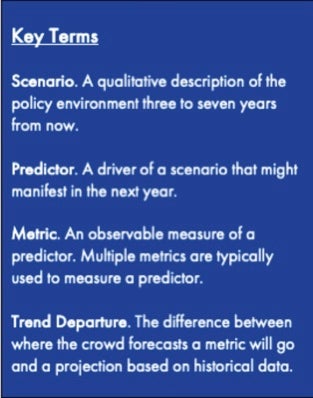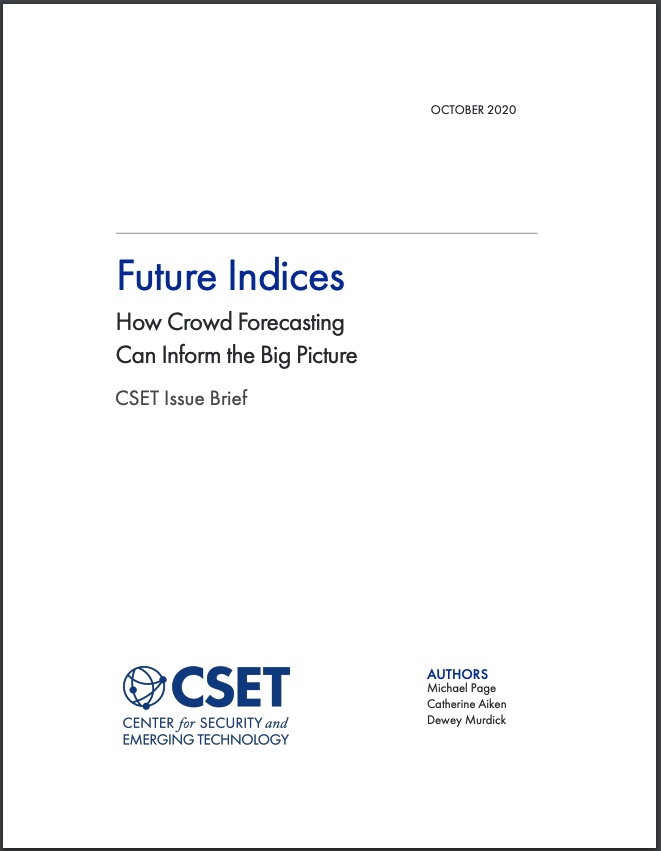What will the world look like in 2025? How will changing geopolitical and tech-security trends—such as U.S.-China relations, remote work, and public interest in automation—shape the world we occupy? These questions about tomorrow are on the minds of policymakers today. Presenting recent forecast data collected through CSET’s Foretell project (cset-foretell.com), this brief shows how crowd forecasting can inform policy by providing data on future trends and linking those trends to future policy-relevant scenarios.
We illustrate Foretell’s methodology with a concrete example: First, we describe three possible scenarios, or ways in which the tech-security landscape might develop over the next five years. Each scenario reflects different ways in which U.S.-China tensions and the fortunes of the artificial intelligence industry might develop. Then, we break each scenario down into near-term predictors and identify one or more metrics for each predictor. We then ask the crowd to forecast the metrics. Lastly, we compare the crowd’s forecasts with projections based on historical data to identify trend departures: the extent to which the metrics are expected to depart from their historical trajectories.

Our preliminary findings suggest two outcomes—both involving increasing U.S.-China tensions and Department of Defense AI R&D investments—are most likely. Forthcoming data on commercial AI R&D investments, globalization, and industry-DoD tensions will inform which of these two scenarios is more likely. Foretell’s approach is a variation on a proposal by Philip E. Tetlock, co-founder of the Good Judgment Project, which won the Intelligence Advanced Research Projects Activity (IARPA)-funded Aggregative Contingency Estimation (ACE) forecasting tournament. We believe a scaled-up version of Foretell would contribute to a more evidence-based policymaking environment.
